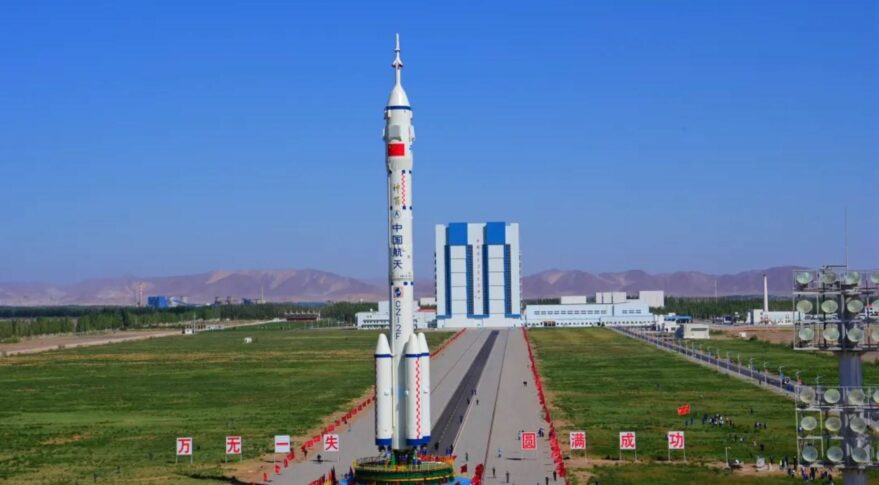HELSINKI — China is preparing to launch three astronauts to its Tiangong space station to oversee a crucial phase of construction of the orbital outpost.
The Long March 2F rocket was rolled out to the pad at Jiuquan Satellite Launch Center in the Gobi Desert early on May 29. The 62-meter-long rocket was transferred vertically across the roughly 1,500 meters from the assembly building to the pad at no faster than 30 meters per minute.
The launcher and the Shenzhou-14 crew spacecraft had been assembled and stored vertically at the site for more than 280 days as it stood on standby in case of need of an emergency on the space station.
The Long March 2F and Shenzhou combination has a tell-tale solid motor launch escape system atop of its payload fairing.
A time and date for launch has not been publicly announced, but liftoff is expected around June 5 Beijing time.
Earlier this month the Tianzhou-4 cargo spacecraft docked with the Tianhe space station core module, carrying supplies in preparation for arrival of the Shenzhou-14 crew.
Shenzhou-14 will dock with Tianhe module’s nadir port, a maneuver performed by Shenzhou-13, a six-month-long mission completed April 16.
The three astronauts, the identities of which have yet to be revealed, are expected to stay aboard the 16.6-meter-long, 4.2-meter-diameter Tianhe core module for around six months.
The crew will receive two new 20-metric-ton-plus modules, Wentian and Mengtian, in July and October respectively, Hao Chun, director of the China Manned Space Engineering Office (CMSEO) revealed in an April press conference.
The modules will launch on Long March 5B rockets from Wenchang, south China. Jiuquan is the only launch site capable of crewed missions in China, with the 41.5 degree orbital inclination of the space station chosen to allow crewed launch access from Jiuquan.
The new modules will dock with Tianhe’s forward port. The crew will cooperate with ground control to transposition the new modules to radial docking ports using a large robotic arm.
Wentian (“Quest for the Heavens”), will feature a new airlock for extravehicular activities, a small robotic arm, and additional living quarters that will allow crew handovers. The first of these will be undertaken when the Shenzhou-14 crew greet Shenzhou-15, which is expected to launch in December. Tiangong will then host six astronauts for a period of days.
The new airlock cabin in Wentian will become the main exit-entry point for extravehicular activities (EVAs) once active. The Shenzhou-12 and 13 crews have so far used Tianhe’s docking hub for EVA entry and exit.
The Shenzhou-14 crew will conduct EVAs, a range of experiments and engage in science popularization and outreach activities.
Tianzhou-4’s cargo mostly consists of supplies for the Shenzhou-14 astronauts but also carries space station maintenance equipment, space science experiment apparatus, and a refrigerator for space science and medical experiments. It also includes a range of seeds to be exposed to radiation in low Earth orbit and later analyzed and used back on Earth.
The first module for Tiangong, the Tianhe core module, was launched in April 2021. It has since received three cargo and two crewed missions.
Tiangong will enter its operational period with the completion of the Shenzhou-15 mission, and host three-member crews for periods of six months at a time. Newly selected payload specialists and other civilian astronauts will then be eligible to fly to the station.
Tiangong is designed to operate in orbit for at least ten years. It could be extended to six modules and host international astronauts.
China is also considering making the station available for tourist visits and will open Tiangong to commercial missions.

